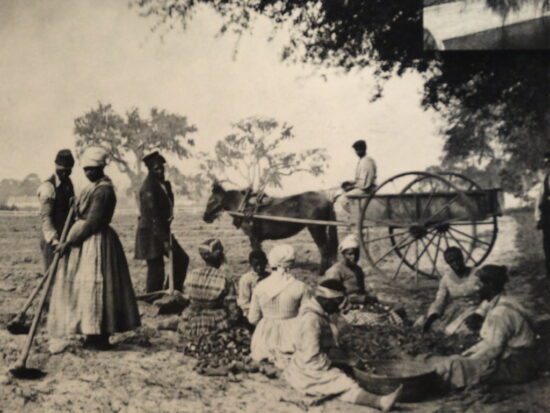Introduction
A classic work of American literature is Uncle Tom’s Cabin, which Harriet Beecher Stowe wrote and published in 1852. The book explores the themes of slavery, morality, and the human capacity for compassion. With its powerful portrayal of the institution of slavery and its impact on individuals, the novel played a crucial role in shaping public opinion and fueling the abolitionist movement in the United States. In this article, we will delve into the various aspects of the novel, including its plot and storyline, characters, themes and symbols, writing style, setting and atmosphere, historical and social context, as well as its impact and reception.
Plot and Storyline
Uncle Tom’s Cabin tells the story of several interconnected characters whose lives are deeply affected by the institution of slavery. The main protagonist is Uncle Tom, a devout and kind-hearted enslaved man who works on a plantation in Kentucky owned by Arthur Shelby. When Shelby falls into debt, he is forced to sell Tom and other enslaved individuals, including a young boy named Harry, to a slave trader named Haley.
As the story progresses, Uncle Tom is sold to a new master, Augustine St. Clare, who treats him relatively well. St. Clare’s wife, Marie, and their daughter, Eva, form a strong bond with Uncle Tom. However, after Eva’s untimely death, St. Clare’s views on slavery begin to shift, and he promises Tom his freedom. Unfortunately, St. Clare is fatally stabbed before he can fulfill his promise.
Tom is then sold to Simon Legree, a cruel and sadistic plantation owner in Louisiana. Legree subjects Tom too harsh physical and emotional abuse, but Tom remains steadfast in his faith and refuses to compromise his principles. Eventually, Tom’s unwavering faith and moral strength inspire those around him, including two fellow enslaved people, Emmeline and Cassy, to resist their oppressors.
The novel also follows the parallel storyline of Eliza Harris, a young enslaved woman who escapes from Kentucky with her son Harry to avoid being sold. Eliza’s journey to freedom is fraught with danger, but she ultimately reaches Canada with the help of kind-hearted individuals along the way.
Characters
Uncle Tom’s Cabin features a diverse cast of characters who represent various aspects of the institution of slavery and its effects on individuals. The character of Uncle Tom himself embodies loyalty, compassion, and unwavering faith. Despite enduring immense suffering, Tom remains steadfast in his beliefs and serves as a moral compass throughout the novel.
Other significant characters include Eliza Harris, who exhibits strength and determination in her quest for freedom, and her son Harry, who symbolizes the vulnerability of enslaved children. Augustine St. Clare represents the complex attitudes of some slave owners, torn between their personal relationships with enslaved individuals and the societal norms they are expected to uphold.
Cassy, an intelligent and resourceful enslaved woman, serves as a counterpoint to the submissive portrayal of enslaved women prevalent in the literature of the time. Through her character, Stowe challenges traditional gender roles and highlights the resilience and agency of enslaved women.
Themes and Symbols
Uncle Tom’s Cabin addresses several enduring themes, including the moral contradiction of slavery, the corrupting influence of power, and the potential for redemption and transformation. The novel explores the concept of Christian morality in the face of institutionalized cruelty, emphasizing the importance of empathy, kindness, and justice.
One of the central symbols in the novel is the character of Uncle Tom himself. Tom’s unwavering faith and willingness to endure suffering symbolize the resilience and dignity of enslaved individuals. His character challenges prevailing stereotypes and humanizes those who were subjected to the dehumanizing institution of slavery.
The cabin where Uncle Tom resides becomes a symbol of refuge and community throughout the novel, representing the strength and resilience of enslaved families and their capacity for finding solace amid adversity.
Writing Style
Harriet Beecher Stowe’s writing style in Uncle Tom’s Cabin is characterized by its emotional intensity and moral fervor. She employs vivid and evocative language to depict the horrors of slavery and elicit a deep emotional response from readers. Stowe also incorporates sentimental elements into the narrative, appealing to readers’ emotions and empathy.
The novel employs a largely linear narrative structure, interspersed with episodes and anecdotes that provide additional context and deepen the reader’s understanding of the characters and their experiences. Stowe’s use of dialogue allows readers to engage directly with the characters and their perspectives, further enhancing the immersive nature of the storytelling.
Setting and Atmosphere
Uncle Tom’s Cabin is set primarily in the antebellum South, depicting the harsh realities of plantation life and the oppressive atmosphere of slavery. The novel vividly portrays the physical and emotional landscape of the plantation, emphasizing the stark contrast between the luxurious lives of the white slave owners and the dehumanizing conditions endured by the enslaved individuals.
The geographic locations within the novel, such as Kentucky and Louisiana, serve as microcosms of the different attitudes towards slavery prevalent during that time. Kentucky represents the border states where slavery was still legal but faced increasing scrutiny, while Louisiana represents the deep South with its harsher and more brutal treatment of enslaved individuals.
The atmosphere of the novel is one of tension, fear, and moral conflict. Stowe effectively creates a sense of urgency and impending doom, particularly in the scenes involving escape and pursuit. The contrasting moments of hope and despair contribute to the emotional impact and the overall tone of the story.
Historical, Social, or Political Context
Uncle Tom’s Cabin was written and set during a pivotal period in American history, when the nation was deeply divided over the issue of slavery. Stowe’s novel emerged as a response to the Fugitive Slave Act of 1850, which required citizens to assist in the capture and return of escaped enslaved individuals. The novel aimed to expose the inhumanity of slavery and rally public sentiment against it.
Stowe drew inspiration from real-life accounts of enslaved individuals and the experiences of abolitionists she encountered. The abolitionist movement’s religious and moral justifications, which sought to challenge the institution of slavery on moral grounds, had a significant influence on the novel.
Uncle Tom’s Cabin not only highlighted the horrors of slavery but also aimed to dispel stereotypes and humanize enslaved individuals. In doing so, it challenged the prevailing racial attitudes of the time and called into question the morality of a society that condoned such a system.
How did the publication of Uncle Tom’s Cabin impact the abolitionist movement in the United States?
Answer: The publication of Uncle Tom’s Cabin had a significant impact on the abolitionist movement in the United States. The novel was released at a critical time in American history, when the nation was deeply divided over the issue of slavery. Harriet Beecher Stowe’s vivid portrayal of the harsh realities of slavery and the moral contradictions it posed captivated readers across the country and helped to galvanize public sentiment against the institution.
One of the key ways in which Uncle Tom’s Cabin influenced the abolitionist movement was by humanizing enslaved individuals and challenging prevailing racial stereotypes. Stowe portrayed enslaved characters such as Uncle Tom and Eliza Harris as complex and sympathetic individuals, countering the widespread belief that enslaved people were inherently inferior or deserving of their fate. By evoking empathy and compassion from readers, the novel challenged the dehumanization of enslaved individuals and fostered a greater understanding of their plight.
The novel also played a crucial role in exposing the brutality of slavery to a wider audience. Readers were shocked and forced to face the harsh realities of the institution by Stowe’s vivid descriptions of the physical and emotional abuse that enslaved people endured. The novel depicted scenes of separation of families, beatings, and other forms of violence, leaving a lasting impact on readers and fueling outrage against slavery.
Uncle Tom’s Cabin sparked intense debates and discussions on the morality of slavery, both within literary and political circles. It ignited conversations about the human cost of the institution and the contradictions between the principles of liberty and justice upon which the United States was founded. The novel brought the issue of slavery to the forefront of public consciousness, forcing individuals to confront the ethical implications of their own beliefs and actions.
In addition to its immediate impact, Uncle Tom’s Cabin had long-lasting effects on the abolitionist movement. It helped to mobilize support for the cause, as readers were moved to join anti-slavery societies, participate in protests, and contribute to the Underground Railroad. The novel was widely circulated and translated into multiple languages, reaching an international audience and amplifying the message against slavery.
Final Conclusions
Uncle Tom’s Cabin remains a landmark work of literature, renowned for its unflinching portrayal of the horrors of slavery and its powerful moral message. Harriet Beecher Stowe’s novel continues to resonate with readers, challenging societal norms and reminding us of the importance of compassion, justice, and the fight for equality. It stands as a testament to the power of literature to effect social change and serves as a reminder of the enduring legacy of slavery in American history.
Sources
Uncle Tom’s Cabin: Full Book Summary | SparkNotes
Uncle Tom’s Cabin | Summary, Date, & Significance | Britannica






